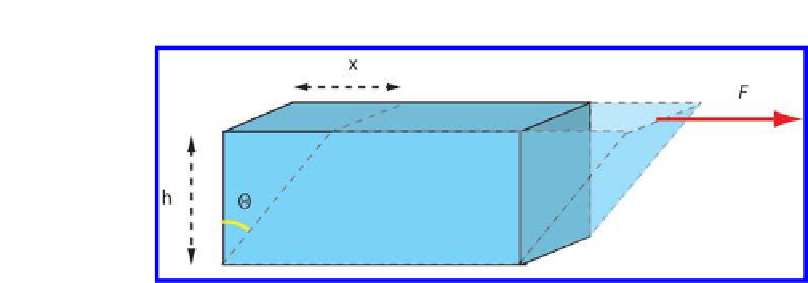Biology Reference
In-Depth Information
Figure 16.3.
Shear deformation of a solid.
Shear modulus (
G
) is described as the ratio between shear stress (
N
) and
shear strain (
θ
):
N
___
G
=
θ
(16.6)
) is thus an analogue of Young's modulus and is expressed
as N/m
2
or in Pascals. The shear moduli of steel (79 GPa) and rubber (0.02
GPa) represent two examples at opposite ends of the spectrum.
Shear modulus (
G
16.2 MEASURING THE YOUNG'S MODULUS WITH THE
ATOMIC FORCE MICROSCOPE
Very soon after its invention, the atomic force microscope (AFM) was
shown to be capable of measuring the mechanical properties of microscopic
samples. The measurement is achieved by indenting (pushing) the AFM tip
into the sample and monitoring online the deformation of the cantilever. The
graph depicting the vertical deformation of the cantilever as a function of the
tip-sample distance is usually referred to as a force-distance (FD) curve. The
“force” is assumed to be equivalent to the cantilever deformation, since the
behaviour of the cantilever is generally considered to follow linear elasticity
rules, viz., the vertical delection is deemed to be directly proportional to the
force that is applied to the sample or to the force that the cantilever exerts on
the sample.
Figure 16.4
depicts the shapes of two typical FD curves: one for a
hard, and the other for a soft sample.
The horizontal green line corresponds to the off-contact region of the
curve, viz., to the distance between the sample and the AFM tip. In this off-
contact region, the cantilever senses no force and is thus not deformed; it
maintains its resting position. After the tip has touched the surface of the
sample, the cantilever will deform according to the sample's stiffness. If the
sample is hard, no indentation will occur and the path of the FD curve will be















Search WWH ::

Custom Search